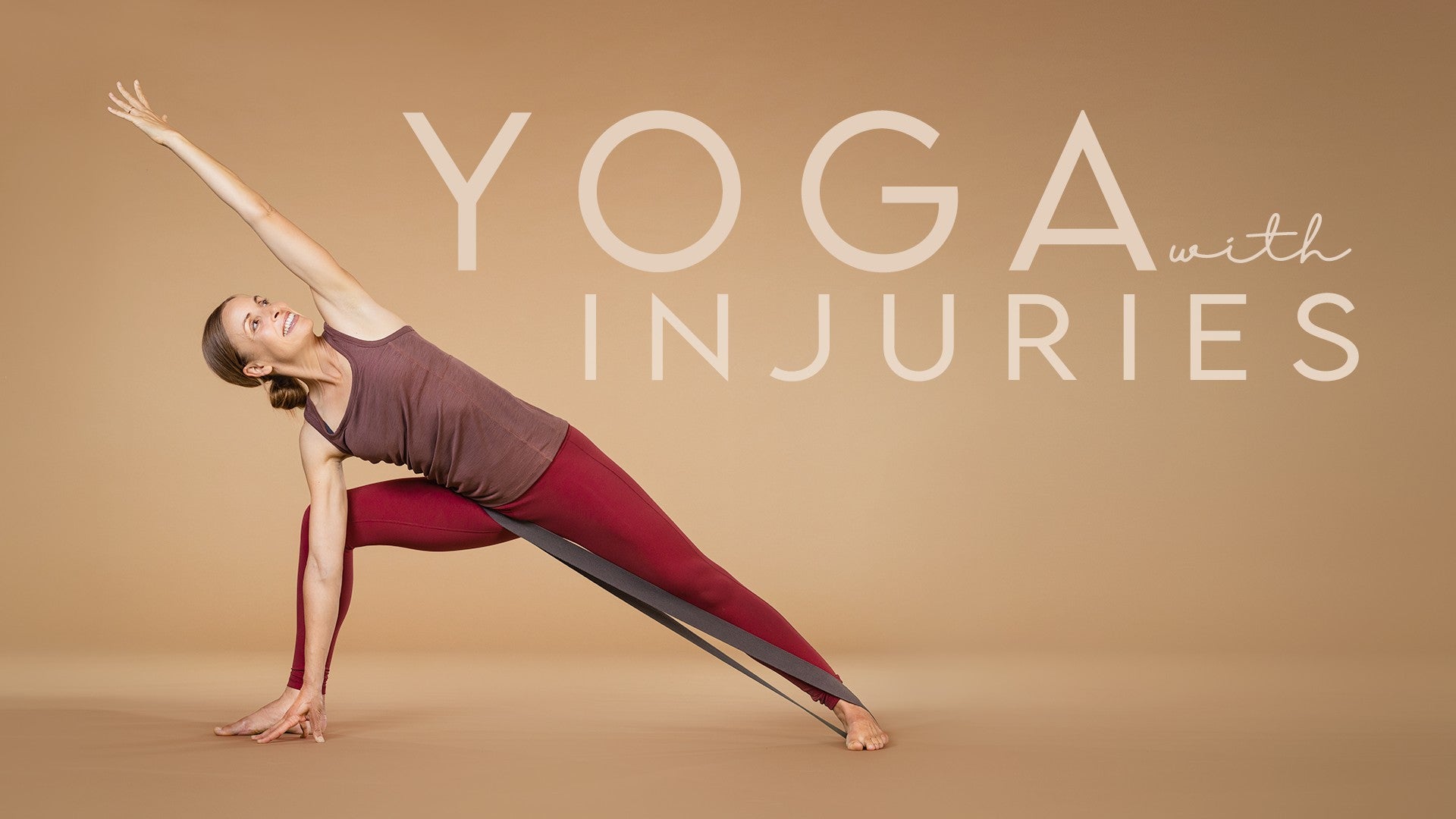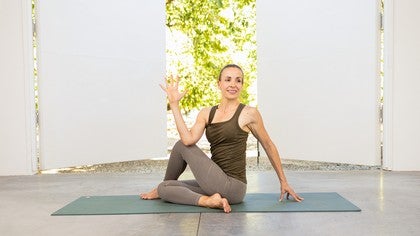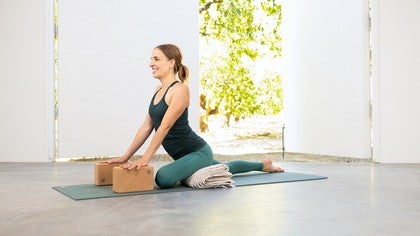Description
About This Video
Transcript
Read Full Transcript
Hi, and welcome to Yoga with Injuries. I designed this series for those of you working with an injury or a flare in a chronic condition that makes it difficult to partake in your usual yoga practices. Sustaining an injury or chronic disease can be fatiguing and stressful. There's often a cycle down before we get better, which begins with the original culprit, maybe a ligament sprain, muscle strain, or the onset of a new condition like osteoarthritis. We have to step back from our regular schedule, our sleep can be disrupted, and we may find that our preferred go-to stress relievers like exercise and yoga now aggravate the injury.
What to do? The good news is that you can break the cycle. Take a breath, given the right conditions and some time, your body knows how to heal itself, and your history of a yoga practice gives you a huge advantage. You are familiar with slowing down, tuning into your body, and resourcing to your breath amidst challenging circumstances. All of these skills will help you in so many ways along your road to recovery.
I am a yoga teacher, certified yoga therapist, and licensed physical therapist. In the field of physical therapy, patients begin their recovery in part by doing exercises targeting a specific joint or region of the body, only that region, because it's wreaking havoc. It takes time, but as patients reach new levels of mobility and strength, they can progress their exercise routine to include functional activities that had become difficult with the onset of the injury. That's when therapy gets more fun. In regards to yoga, one of the ways that yoga asana shines is that it can be a lot of fun, and one of the reasons it's fun is that it's a full body approach to movement.
Even as we work on the legs in the standing poses, so we attend to the position of the arms and torso. The nervous system is toned, which leaves us feeling better emotionally. We often find through the breath some inroads to spirit. No stone is left unturned. So the physical therapy approach is effective, tried and true.
But wouldn't it be fun to include your therapeutic exercise in the scope of your yoga practice? These sequences are designed to do just that. They draw from the best of these two disciplines, peppered throughout the classical yoga postures. You'll find physical therapy applications, either intermingled with or layered on top of the poses themselves. Your background in yoga will support you so that muscle memory kicks in where you are strong and healthy, and you can be in the poses and also attend to the challenged parts.
As an example, in the sequence for the wrist, there's a lot of attention given to externally rotating the upper arm at the shoulder. This stems from the experience of a wrist injury on the hands and knees, in downward facing dog, plank, chaturanga, up dog, the sun salutations. Very often the reason the wrist is experiencing a challenge is because the shoulders aren't quite supporting the wrists enough. And one of the motions needed is external rotation in downward facing dog. And so we see it in the wrist sequence from the get-go, right at the beginning, turning the upper arms out.
That progresses to turning the upper arms out with the arms overhead. And then that same action in warrior three. And then again, down on the ground on the elbows, we'll use the block, palms face in or up, which teaches the upper arm how to externally rotate. At that point, weight bearing, very similar to downward facing dog. So as the wrist receives its time of rest, and perhaps some targeted therapy there as well, the shoulders, rather than resting, are actually getting toned.
And so when it's time to go back to downward facing dog, you have a new system already in place, so that hopefully the injury does not recur. In another sequence on the hips, we can have a lot of issues in the hips from pressing the pelvis forward, just in daily life, the psoas for many people from sitting becomes chronically tight or in a spasm. To stretch the psoas, normally, we would push the hips forward, but that's part of the problem. And so taking a strap, as you'll see in the sequence, around one hip, opposite heel, creates like a physical therapy adjustment that you would need from your clinician to press on the joint, actually moves the top of the thigh bone back in the socket. And then that way, we also release the psoas.
The joint is better aligned, that muscle is released. So who is the new strength in that one? It's the glutes again, and so you'll find some leg lifts. So we repattern around the hips in a new way again, which allows the injury to heal. One more example at the knees.
Just like any part of the body, issues at the knees can be many causes. But as a general trend, when the kneecap doesn't track properly with the thigh bone above and the shin bone below, especially when the knees cave in, many people suffer knee pain for those reasons. Now the helper to get the knees back out are actually a little far away from the knees, the hips. So the muscles we need to strengthen for the knees may not be anywhere near the knees. And so you'll see in the knee sequence, again, some leg lifts targeting the gluteal muscles.
And then as we stand up, we get functional, put on a strap, push out on it, so that things like squatting or utkatasana, chair pose, that's your squat, which you move through when you get up and down from a chair, from your bed, in and out of the car. And we train with the strap how to hold the knees wide, so that when you go off your mat into your functional living, you're taking that therapeutic application with you. Now you won't be engulfed by your challenged area the whole time. The sequences ebb and flow in and out of physical therapy. So at times you can practice as you normally do.
I've attempted to remove movements that commonly aggravate a particular injury. So there's space for you to simply enjoy and inhabit your yoga practice to find stress relief and whole body healing. My hope is that you get a bit of physical therapy with your yoga practice and that the experience of yoga fuels your healing body, mind and soul. Enjoy.
Yoga with Injuries: Olivia Barry
Comments
You need to be a subscriber to post a comment.
Please Log In or Create an Account to start your free trial.











